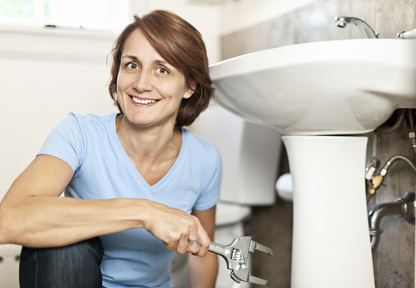Every person seems to have his or her own piece of advice on the subject of How to Fix a Water Damage Bathroom.

The restroom is incredibly prone for damp buildup and also potential water damage due to the regular use of water in it. This short article provides easy evaluation methods to assist identifying water damages threats.
The constant use water in the washroom makes it exceptionally susceptible for damp build-up as well as prospective water damage. By examining it routinely, you can decrease water related problems.
The adhering to collection of examinations is simple to perform and should be done once in every three months in order to maintain your washroom healthy and also to stop possible water problems triggered by the tub, the shower, pipe joints and also plumbing, sinks, closets, as well as the bathroom
Do not overlook carrying out these evaluations and be thorough while executing them. Remember that these basic inspections can conserve you a great deal of cash by giving very early indicators for water damage
Bath tub and also Shower
The shower as well as tub require unique focus as well as maintenance. Examine the tiles and also replace if fractured. See to it that there is no missing out on cement between the ceramic tiles. Inspect and also change split caulking at joints where the walls meet the flooring or the tub. Blocked drains and pipelines issues will avoid the bathtub from drying out as well as may indicate significant issues below the bathtub. Seek advice from an expert right away to prevent architectural damages. Take note of stainings or soft locations around the tub walls as they might suggest an inner leakage.
Plumbing
Signs for water damage are tough to find because most pipelines are set up inside the walls.
Pay unique interest to flooring and also walls moisture and also spots as they might suggest an unnoticeable plumbing trouble. Inspect dampness degrees in adjoining areas also.
Sinks and also Cabinets
Sinks as well as cabinets are exposed to dampness and moisture daily as well as are often neglected. Check routinely under the sink and also on the countertop above it. Fix any kind of drip in the trap as it might recommend drain issues. Look around the sink, sluggish draining pipelines may suggest an obstructed drain. Replace sink seals if they are split or loosened.
The Commode
The toilet is a prone water joint. Check the water lines as well as look for leaks around the bathroom seat, in the pipe, and also under the water tank. If you find any kind of signs of moisture on the floor around the bathroom, look for leaks in the toilet rim as well as container seals.
Be aware that hanging toilet bowl antiperspirants raises the chances for blockages.
10 TIPS TO PREVENT WATER DAMAGE IN THE BATHROOM
The average household uses approximately 80-100 gallons of water per person per day. For a family of 4, that's almost 2,500 gallons of water a week! The largest portion of this consumption comes from bathroom use. Flushing the toilet uses the most water, followed by taking a shower or bath. With that much water running through the home, water damage in the bathroom is bound to happen. Knowing how to spot signs of a water leak is essential to preventing long-term damage. This guide provides you with tips to reduce the impact of water damage on your bathroom.
CAUSES OF BATHROOM WATER DAMAGE
Pipe breaks are the most common cause of water damage we see in our daily jobs. The age of a pipe plays a large role in a pipe break as well as corrosion. Over time, the metal begins to break down, allowing water to escape. Frozen pipe breaks are also a concern in the winter months. Toilet overflows caused by paper products or children flushing inappropriate items. Degraded caulking around the toilet or bathtub can allow water seepage, sometimes behind the fixture, into the subfloor or walls. Condensation forms when the water in a pipe is cooler than the air temperature. Beads of water form on the exterior of the pipes, sometimes so much so that the water begins to drip and pool below. Sink or shower backups created by poor drainage. HOW TO PREVENT WATER DAMAGE IN YOUR BATHROOM
Inspect your toilet supply line for worn or frayed hoses and replace them as needed. Winterize your plumbing to prevent a frozen pipe break. Use vent fans to prevent condensation that can lead to mold growth. Routinely check and replace degraded caulking around your toilet or bathtub. Increase the temperature in your toilet tank and insulate your pipes during the warm summer months to keep condensation from forming. Use child safety locks on the toilets. Flush only toilet paper. "Flushable" wet wipes are actually not good for your plumbing system. Additionally, feminine hygiene products should not be flushed. Prevent water from escaping the tub or shower. Make sure shower curtains are in good condition. Inspect shower doors and replace the seal strip if necessary. Wipe up any water that accumulates on the floor and use bath mats. Water left to sit can cause damage to the tiles and flooring. Refrain from using bath products containing heavy oils to avoid a clogged drain.

I hope you liked our article on How to Fix a Water Damage Bathroom. Many thanks for taking time to read through our posting. For those who enjoyed our post kindly remember to share it. We thank you for reading our article about How to Prevent Bathroom Water Damage.
Visit Site